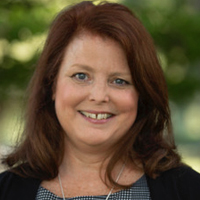
The wealth management industry is experiencing an aging crisis. According to a survey conducted by JD Power in 2019, the average age of financial planners is 55. In addition, the survey found that one-fifth of advisors are 65 or older. Demographically, the industry is age lopsided.
As part of legacy planning, it is important for firms to cultivate young talent. However, transitioning older clients to younger advisors can be tricky due to the common biases held by both sides, and the lack of experience people have working with members of different age groups.
Wealth advisories can foster a strong and long-lasting relationship between younger advisors and older clients. What follows are six steps that firms can take to accomplish that goal.
Educate advisors on the diversity of the aging experience.
Not all experiences of aging are created equal. One of my reads this summer is “Elderhood: Redefining Aging, Transforming Medicine, Reimagining Life” by Louise Aronson. In this brilliant work, Aronson draws on her own experience as a geriatrician and daughter to illuminate the challenges of growing older in our youth-focused (some might even say, youth-obsessed) society. Although the book describes the challenges age bias causes within the medical system, the lessons apply to any other professions that serve older adults, including the financial industry.
By and large, most people view aging as something to be avoided, a disease. They see older adults as being in decline and disabled. Sadly, some advisors may be susceptible to this viewpoint simply because they lack the experience of working with or being around older adults on a regular basis.
To add another layer of complexity to the issue, “old” is an elusive construct. It is not clear for many of us when being “old” actually happens. Is it at 50? 62 ½? 65? 75? We’re living longer than ever before, sometimes 20 or 30 years past traditional retirement age.
Also, the retirement experience of a generation or two ago has changed dramatically. If we look around, we see a vast majority of older people who are busy living their lives. Many remain active and engaged through continued employment, civic engagement, and family and community involvement well into later life.
In fact, for many, older age is not a time of slowing down. Rather, it is a time for cultivating the knowledge and wisdom of a lifetime to pursue lifelong passions and dreams.
Additional Reading: How long can you work as an advisor?
With all that being said, however, there is still the reality of living longer. For some clients, medical issues, physical declines and/or cognitive impairments hinder a positive experience of aging. Our bodies do experience wear and tear over time. Based upon medical science, the older one gets the greater the chance they will experience physical or mental decline. Fortunately for many, advances in medical technologies and therapies have allowed for physical and mental decline to be delayed until much later in life.
“Age is just a number. It is important for young advisors to view clients in terms of their ability rather than their age.”
The diversity of the aging experience illustrates the importance for young advisors (and all of us) not to lump older clients together in one “old” bucket. Just as clients differ in personality, so does the experience of aging vary from person to person. Age is just a number. It is important for young advisors to view clients in terms of their ability rather than their age. Relating to clients on this level will foster a more meaningful and productive relationship between advisor and client.
Stress the Importance of Empathy in Building Relationships
Later life can be a time marked by changes. It is important to be sensitive to the changes that occur as people get older. People may experience a series of losses such as the loss of ability, loss of status, and loss of independence, as well as the shrinking of their social circles. These changes can be challenging for clients to navigate and when compounded, can negatively impact overall health and wellbeing.
Being aware and empathetic to the potential challenges older clients may face is important to establishing a trusted advisor-client relationship. Because much of financial planning goes beyond just calculating the numbers, clients often turn to advisors for advice during life’s transitions.
Along with the awareness of these transitions, young advisors should educate themselves on the resources and services that are available to assist older clients. They may even want to network with aging services providers to gain a sense of the providers in their area that can assist their clients when the need arises. As a valuable resource, advisors can connect clients with supportive programs and services that allow them to maintain wellbeing, choice and independence in their lives.
Explain Effective Communication With Older Clients
Much has been documented about the difference in communication styles between the generations. Generation Z and millennials are the first generations born into the technology boom of the 21st century. They have adopted technology for almost every aspect of their lives. They are also known to have a unique communication style, which is often brief and abbreviated. Text messaging is their preferred method of communication.
Unlike Gen Z and millennials, Generation X and baby boomers adopted the use of technology later in their lives. While most are comfortable with technology, they prefer more personal interactions. The majority of Gen X and baby boomers prefer email and phone over text messaging as means of communication.
Because of the differences in communication styles between the generations, it is important to make sure that younger advisors know how to communicate effectively with older clients.
The first step is to make sure they understand what method of communication a client prefers. Next, it is important to mentor young advisors on how to communicate effectively in that desired communication style. It should not be assumed that younger team members are accustomed to crafting detailed emails or comfortable having prolonged telephone or in-person conversations.
Highlight Tech Expertise Younger Advisors Offer
For all the discussion about biases younger people might have about aging, it is important to note that age bias goes both ways. It may be difficult for older clients to feel confident in advisors that often are the same age as their grandchildren.
While clients realize young advisors may be more up to date on the latest planning strategies for 529 plans and debt management, for instance, they may still be skeptical of taking advice from someone who lacks the personal experience of utilizing those strategies themselves.
There is a great value, however, that young talent brings to a team, particularly in terms of the latest technology and trends that clients will greatly benefit from. It is important to call attention to that “bonus” when transitioning older clients to younger advisors.
Showcase Young Talent
Clients can be skeptical about the abilities of advisors who are significantly younger than themselves or just a few years out of school. It is important to help clients realize that individuals from each generation have something to learn from the other.
One way to bridge the gap is to provide opportunities for young advisors to showcase their knowledge. Hosting educational and enrichment events for clients can help older clients see younger advisors as knowledgeable and professional. The more clients can see the abilities of those advisors, the more comfortable they will be over the long-term.
Build Advisor Teams Of Varied Ages
Helping older clients see young talent as an asset to their financial planning team is key to a smooth transition. One way to do this is to team junior advisors with more senior ones.
Working with multiple members of an advisory team allows clients to see the strengths and expertise of each member. Senior advisors can be there to foster an ongoing collaborative relationship between the young advisor and client. Going forward, as the senior members of the team begin to retire, the transitions are likely to be more seamless as clients will already be familiar with the other members of the team.
Final Thoughts
As a significant portion of financial advisors near retirement, the industry itself will begin to experience a “passing of the torch” from older advisors to their younger colleagues.
Advisors that prepare clients as well as their own employees for this transition put them in a better position to create a lasting legacy of planning services for clients and their families. In addition, you will help bridge the generational divide within the financial planning industry by encouraging collaboration among your professionals and clients of all ages.
Molly Prues, a gerontologist, is CEO and founder of VistaLynk, a company that provides education on the issues that impact older age and caregiving clients. VistaLynk’s ground-breaking programs provide the building blocks to reimagine aging and empower caregiving.







